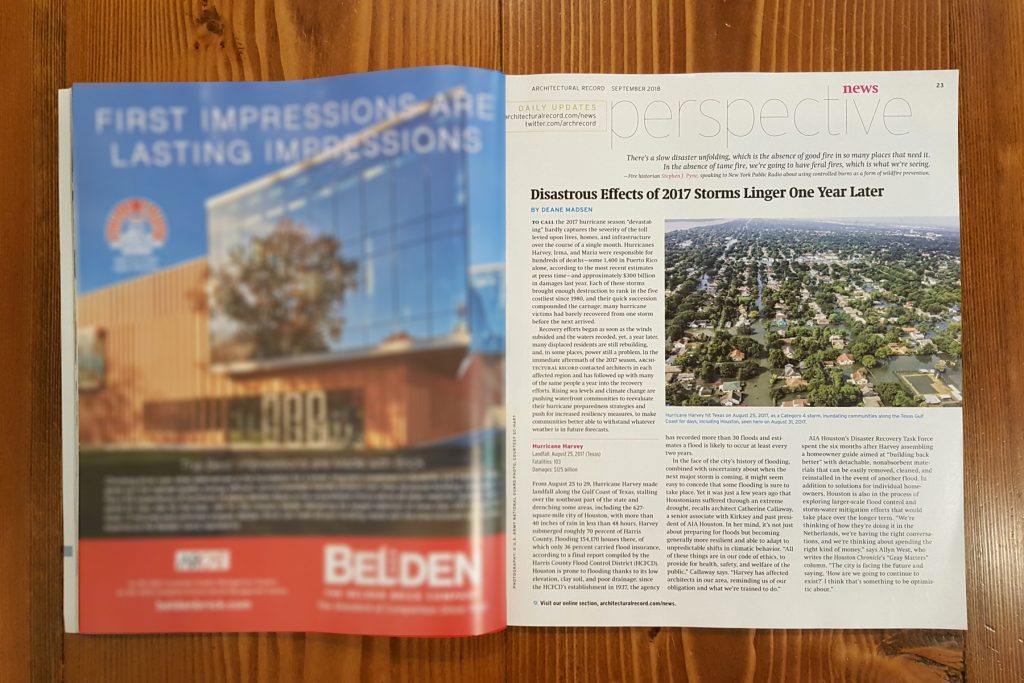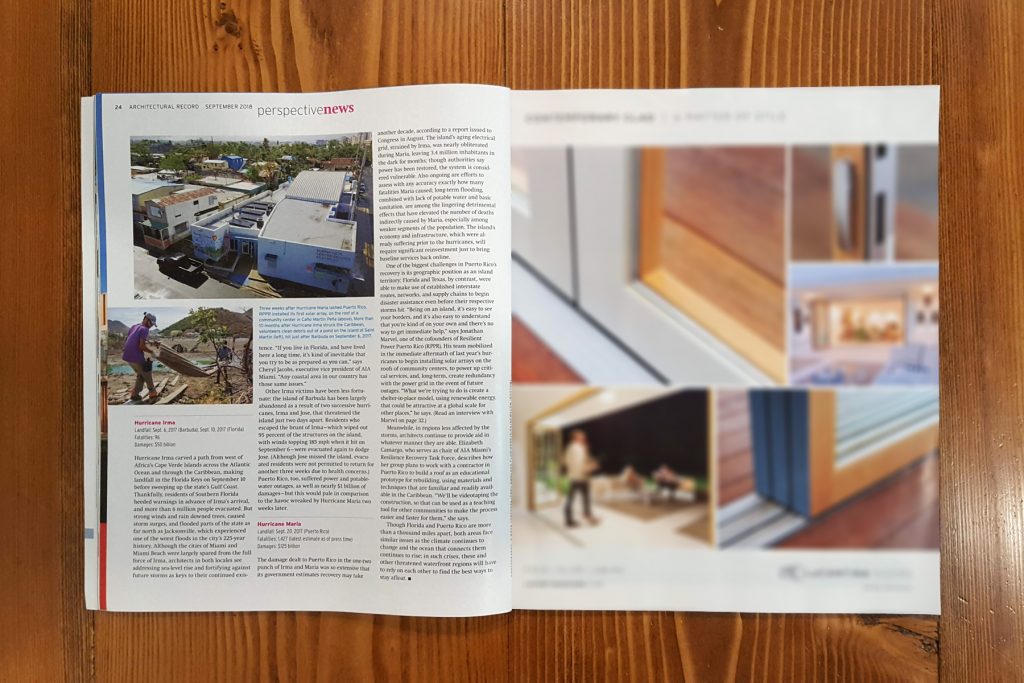Hurricanes in Architectural Record
Every year between June and November, Atlantic cities brace themselves for hurricane season. In 2017, three major hurricanes struck the U.S. and wreaked extraordinary damage and loss of life. I wrote about the effect of these hurricanes and the subsequent recovery efforts each region has undertaken in the year since for Architectural Record. An excerpt of the article follows.
To call the 2017 hurricane season “devastating” hardly captures the severity of the toll levied upon lives, homes, and infrastructure over the course of a single month. Hurricanes Harvey, Irma, and Maria were responsible for hundreds of deaths—almost 3,000 in Puerto Rico alone, according to the most recent estimates—and approximately $300 billion in damages last year. Each of these storms brought enough destruction to rank in the five costliest since 1980, and their quick succession compounded the carnage; many hurricane victims had barely recovered from one storm before the next arrived.
Recovery efforts began as soon as the winds subsided and the waters receded, yet, a year later, many displaced residents are still rebuilding, and, in some places, power still a problem. In the immediate aftermath of the 2017 season, Architectural Record contacted architects in each affected region and has followed up with many of the same people a year into the recovery efforts. Rising sea levels and climate change are pushing waterfront communities to reevaluate their hurricane preparedness strategies and push for increased resiliency measures, to make communities better able to withstand whatever weather is in future forecasts.
Hurricane Maria
Landfall: Sept. 20, 2017 (Puerto Rico)
Fatalities: 1,427 (latest estimate as of press time)
Damages: $125 billion
The damage dealt to Puerto Rico in the one-two punch of Irma and Maria was so extensive that its government estimates recovery may take another decade, according to a report issued to Congress in August. The island’s aging electrical grid, strained by Irma, was nearly obliterated during Maria, leaving 3.4 million inhabitants in the dark for months; though authorities say power has been restored, the system is considered vulnerable. Also ongoing are efforts to assess with any accuracy exactly how many fatalities Maria caused; long-term flooding, combined with lack of potable water and basic sanitation, are among the lingering detrimental effects that have elevated the number of deaths indirectly caused by Maria, especially among weaker segments of the population. The island’s economy and infrastructure, which were already suffering prior to the hurricanes, will require significant reinvestment just to bring baseline services back online.
One of the biggest challenges in Puerto Rico’s recovery is its geographic position as an island territory; Florida and Texas, by contrast, were able to make use of established interstate routes, networks, and supply chains to begin disaster assistance even before their respective storms hit. “Being on an island, it’s easy to see your borders, and it’s also easy to understand that you’re kind of on your own and there’s no way to get immediate help,” says Jonathan Marvel, one of the cofounders of Resilient Power Puerto Rico (RPPR). His team mobilized in the immediate aftermath of last year’s hurricanes to begin installing solar arrays on the roofs of community centers, to power up critical services, and, long-term, create redundancy with the power grid in the event of future outages. “What we’re trying to do is create a shelter-in-place model, using renewable energy, that could be attractive at a global scale for other places,” he says.
Read the full story at Architectural Record.

